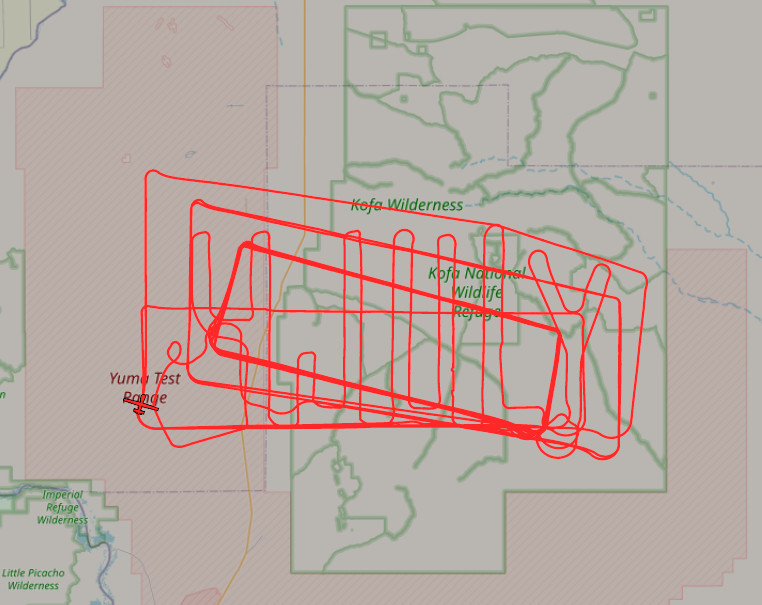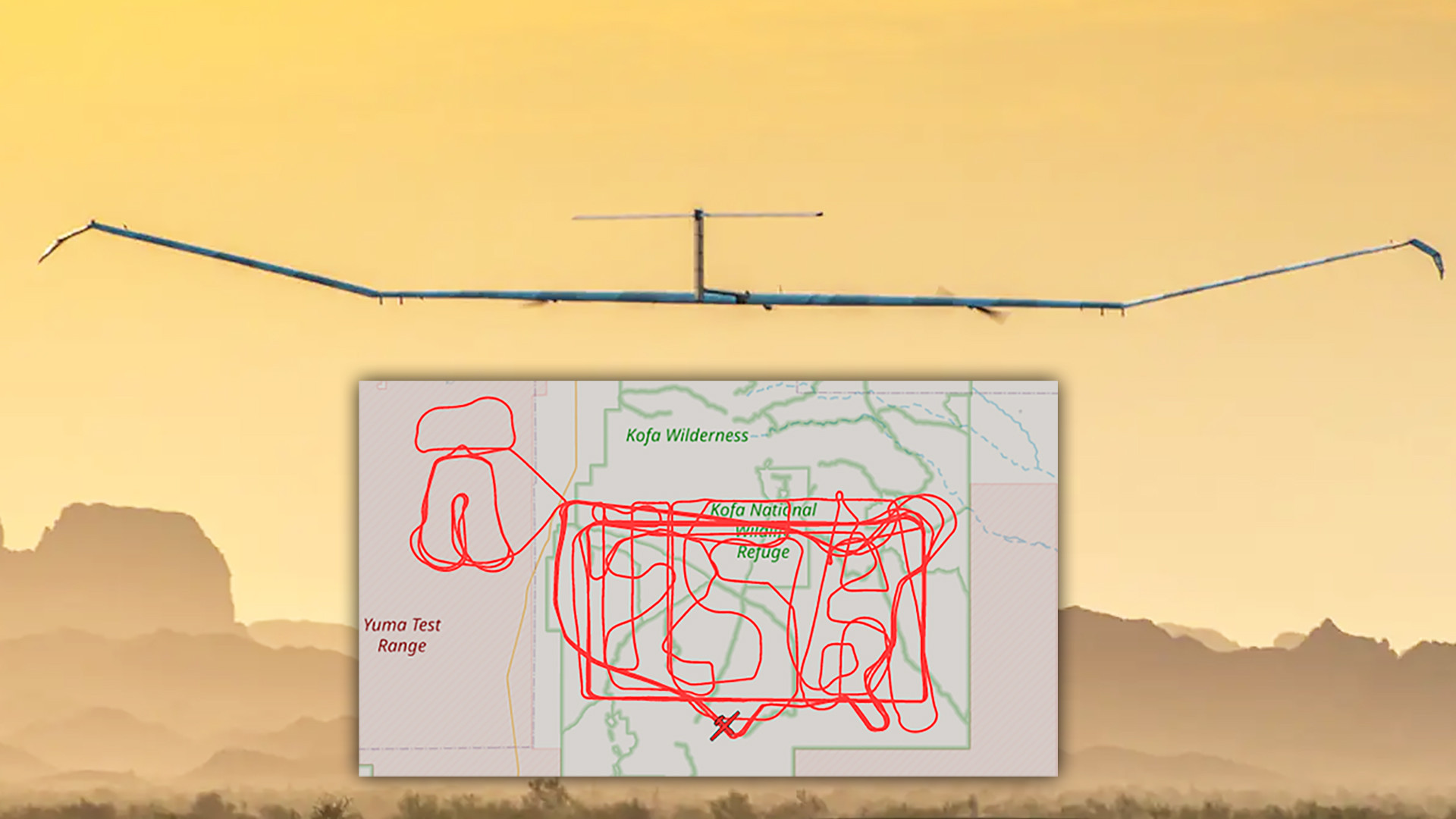Online flight tracking data shows that the operators of the extreme-endurance, high-flying Airbus’ Zephyr S unmanned aircraft that is currently conducting a very-long-duration sortie flew routes over the Kofa National Wildlife Refuge in Arizona today that traced out the number 26, the letters USA, and what appears to be the outline of the contiguous United States. Another part of its flight path took the drone over the Yuma Test Range and the resulting design may be intended to depict the Liberty Bell or the symbol for the mathematical constant pi.
The number 26 appears to reflect the fact that the solar-powered drone looks to have been flying now for 26 days, which, if confirmed, would be a new world record for longest unmanned flight. This same type of drone set the previous record of nearly 25 days aloft. This current flight is part of a U.S. Army experiment, as you can read more about in The War Zone‘s initial reporting here.
Online flight tracking data had previously shown the Zephyr S taking off from an airstrip at the Army’s Yuma Proving Ground (YPG) on June 15. The drone, which has been using the callsign Zulu 82, looks to have been in the air ever since. In addition to its time in the air over Arizona, it notably flew all the way to Belize and back via the Gulf of Mexico and the Caribbean Sea as part of its flight activity over the past month or so.

Zulu 82’s operators have taken other opportunities to ‘write’ brief messages using the drone’s flight path in the past week or so, according to online flight tracking data. On July 7, the unmanned aircraft’s route spelled out the letters R and C with a heart in between, the exact meaning of which is currently unknown. The day before there had been a waving hand. “4 July” appeared on that date, which is America’s Independence Day.



What else the Zephyr S has done and is still set to do in the course of this likely record-setting flight is not entirely clear. “This experiment is intended to test the UAV’s energy storage capacity, battery longevity, solar panel efficiency, and station-keeping abilities,” a spokesperson for the Army’s Assured Positioning, Navigation and Timing/Space (APNT/Space) Cross-Functional Team (CFT) office, part of Army Futures Command, previously told The War Zone, adding that the main focus has been on using the unmanned aircraft as a sensor platform. As we noted in our initial story on this drone’s flight activity, the involvement of the PNT/Space CFT could also point to its potential ability to support future alternative navigation networks, as well as to act as an airborne communications and data-sharing relay node.
More details about this flight’s achievements are likely to come after it finally returns to the ground.
We’ll keep you posted!
Contact the author: joe@thedrive.com
